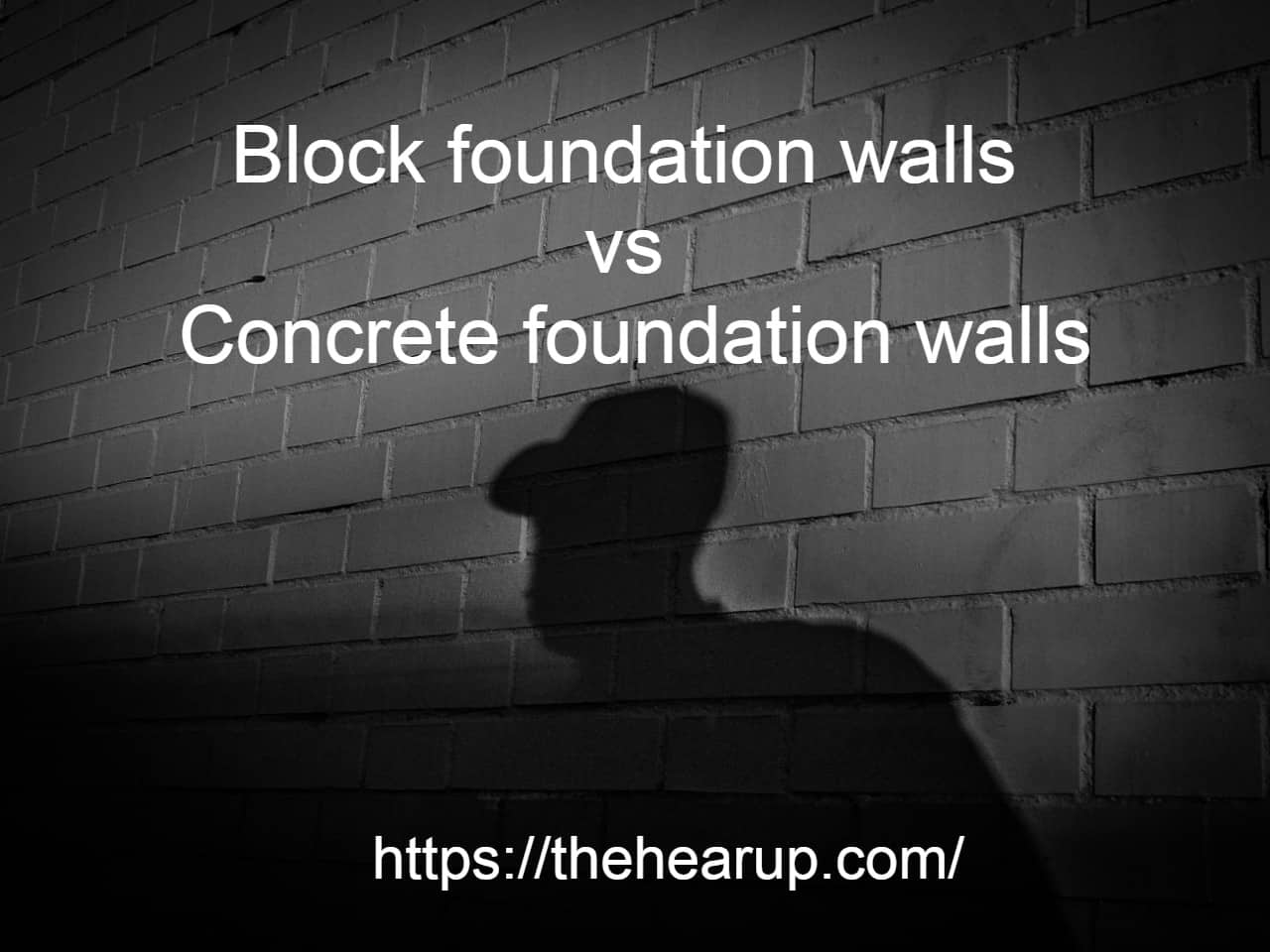Latest News
Block foundation walls vs Concrete foundation walls

So, you’re looking for the highest quality of foundation for your home and are confused between the concrete poured foundation wall and concrete block. Well, the truth of the matter is that both foundation systems yield superior footing walls and are used widely. When building a retaining wall, never backfill with, or compact, topsoil; it will breakdown and settle, creating a water-welcoming trench behind your wall. Use sandy or gravelly materials, which compact much better.
Both of the systems have their pros and cons and the decision is purely yours. But to make a well-informed decision; you should know the positives and negatives of both foundation systems.
For concrete foundation walls, you require a massive amount of concrete for which you should have a nearby ready mix plant. If you can’t find one, better go with the block walls. But you can’t get anywhere else the versatility and durability of the concrete wall foundation. Anyhow, the foundation is the most important aspect of a building and one must be very careful before jumping to a conclusion.
Feeling mixed-up? Don’t’ worry; let’s discuss each one by one so you can choose the best for your project.
Block Foundation Walls
The concrete block foundation is built up by using a concrete block of typical size 16 x 8 inches and is secured together with mortar. It is quite easy to install blocks as only basic masonry skills are enough to cast a block foundation. The blocks are placed like bricks in some overlapping patter to interlock them and get stability along with strength. Reinforced block masonry includes installation of steel bars, also called re-bar, connecting the blocks with the concrete footing.
The Block foundation wall is quite easy to construct as you don’t need to install heavy wooden formwork. If properly installed and reinforced with steel rebar, the block foundations are long-lasting and durable.
Anyhow, just because of shoddy workmanship and improper reinforcement, the block foundations are considered vulnerable and weak.
Poured Concrete Foundation
Although block foundation is good at load-bearing capacity due to limited lateral strength, it is always vulnerable for large unsupported heights.
Thus, if you’re looking for a foundation with increased strength, density, and a one that is free from basement water issues than poured concrete foundation is your pick. The concrete foundation is built by pouring ready-mix concrete is properly fixed large heavy wooden formwork that is properly secured. Reinforcement bars designed as per imposed load are already installed in the footing before pouring concrete.
This type of foundation requires less time to cast than block foundation walls and is way too strong in terms of compressive and flexural strength. It is fire resistant and above all, it is maintenance-free.
Block foundation walls can take up to a week or more to build depending on the size of the footing and amount of manpower deployed. In contrast, the concrete foundation walls only take up to three days from fixing of formwork to striping.
Building specifications
The Ontario Building code has stipulated building specifications for the foundation wall thickness and lateral support for concrete foundation wall and block foundation wall. The specifications are summarized below for your ready reference:
- For Solid Concrete block having 15 to 20 Mpa strength, the minimum wall thickness shall be between 150 to 300 mm.
- For the unreinforced concrete block, the minimum wall thickness shall be between 140 to 290 mm.
- In the case of the concrete foundation wall, the wall thickness shall be greater of
- 140 mm or
- The thickness of concrete in the wall above.
- For walls made with insulating concrete formwork shall be supported laterally from the top and the bottom.
- A concrete block wall that is to be reinforced must have a continuous horizontal bond beam along the top of the wall, at a connection with the floor, and sill of openings. The vertical reinforcement for such walls must be along the centerline of the wall.
- For reinforcement of concrete blocks walls a ladder or truss type lateral reinforcement shall be installed at every bed joint of every second masonry course.
Load bearing capacity
The width of the concrete or block masonry footing wall depends on the load-bearing capacity of the soil measured in PSF (pounds per square foot). All sizes of walls like 8-inch, 10-inch, and 12-inch width walls have different load carrying capacity but the size must be selected keeping in view the load-carrying capacity of the soil. It follows the simple rule that more the lower the soil bearing capacity, the wider the footing needs to be.
Cost difference
The concrete foundation walls have a hefty price tag but in the long run, the cost is well justified as no maintenance work is required. The cost for the concrete foundation walls comprises of cost for concrete, formwork, finishing, and reinforcement. Whereas for block foundation walls, the labor cost is reduced and you also don’t require forms to finish your foundation work.
The Bottom Line
Both concrete foundation walls and block foundation walls are popular foundation choices. The materials in both cases are readily available and both are durable and long-lasting. However, despite all the similarities, both foundation types have their pros and cons. One must priorities his project requirements and analyze site situations before selecting the type of foundation system.
Having completed my education in English, I’ve cultivated a successful career as a content writer. My tenure includes valued collaborations with distinguished professional organizations, reflecting my commitment to producing high-quality content.
Contact me on this mail: [email protected]










